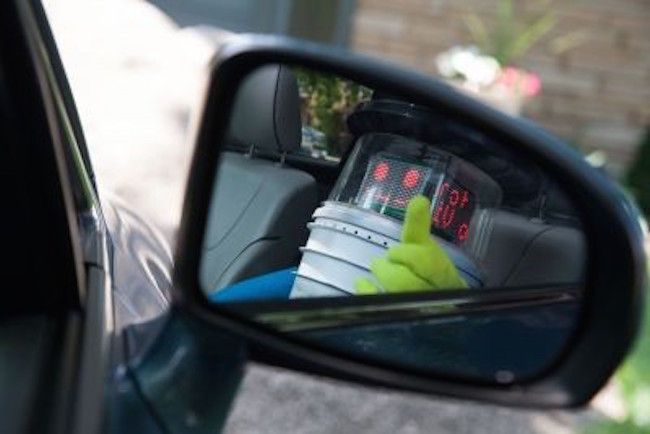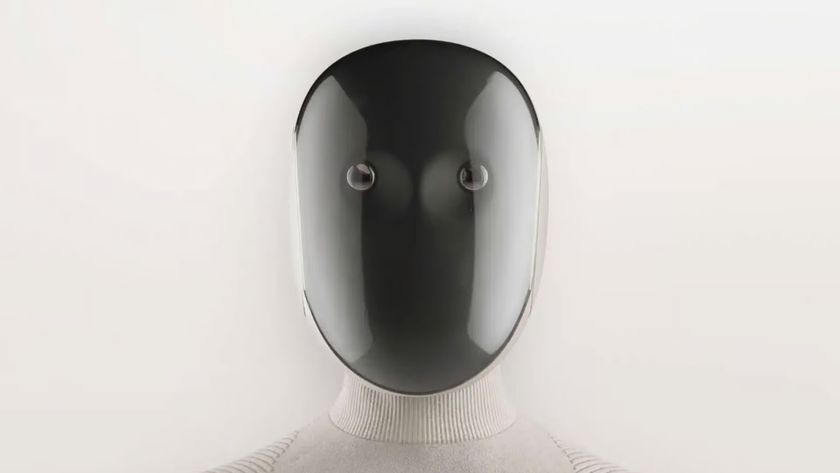Pull Over, America! This Adorable Hitchhiking Robot Needs a Lift

Think you'd never pick up a hitchhiker? Then you've probably never met hitchBOT, a hitchhiking robot that hovers by the side of the road, sticking its thumb out and hoping for a ride. Between its adorable rain boots and its charming personality, how could you not give this bot a lift?
Last year, the unusual humanoid robot made its way across Canada as part of a hybrid experiment designed to study the culture (and limits) of human kindness, as well as the current state of artificial intelligence. Last week, hitchBOT embarked on a similar journey across the United States — relying only on the benevolence and curiosity of licensed drivers to get from Salem, Massachusetts, to Los Angeles.
Of course, the adventurous little robot hopes to make a few stops on its cross-country road trip. Its current bucket list includes visits to Times Square, Mount Rushmore and the Grand Canyon. In exchange for a ride to these destinations, hitchBOT will keep its driving companions company — making small talk and just generally being oddly adorable. [In Photos: Hitchhiking Robot Embarks on Cross-Canada Journey]
There are no rules surrounding how drivers can interact with hitchBOT, though the creators told the Associated Press (AP) that they hope drivers will plug the little bot in if its battery is running low and avoid dropping it off on the side of busy highways.
Dreamed up by researchers in Canada, hitchBOT's mission was originally to explore two issues: the usefulness of social (or companion) robots, and society's growing aversion to adventure and risk, David Harris Smith, a professor of communications at McMaster University in Hamilton, Ontario, and one of the robot's creators, told Live Science last year during the robot's cross-Canada journey.
"From a cultural and sociological perspective, hitchBOT might be used to fathom differences in cultural attitudes toward social robotics," Smith said at the time.
The robot's cutesy look is intentional, according to Smith and his fellow bot designers, who told the AP that the bot's low-tech appearance and diminutive stature (they call it "kid-size") makes it more approachable and wards off potential thieves. After all, why would anyone steal parts from a robot that has pool noodles for arms (capped with yellow gardening gloves), a body made from an old beer pail and a head forged from an acrylic cake saver?
Sign up for the Live Science daily newsletter now
Get the world’s most fascinating discoveries delivered straight to your inbox.
On the inside, hitchBOT is a bit more high-tech. The robot is equipped with a GPS system so researchers can track its location. It also has a built-in camera that snaps a few pictures every 20 minutes to document the bot's travels. The robot can post the data it collects about its travels to social media sites, such as Twitter, Facebook and Instagram.
More than 34,000 people follow hitchBOT on Twitter (@hitchBOT). Another 13,000 people keep track of the robot's antics on Instagram (@hitchbot), and the bot has more than 60,000 "Likes" on Facebook. You can also follow the hitchhiking bot via its website.
Follow Elizabeth Palermo @techEpalermo. Follow Live Science @livescience, Facebook & Google+. Original article on Live Science.

Elizabeth is a former Live Science associate editor and current director of audience development at the Chamber of Commerce. She graduated with a bachelor of arts degree from George Washington University. Elizabeth has traveled throughout the Americas, studying political systems and indigenous cultures and teaching English to students of all ages.











